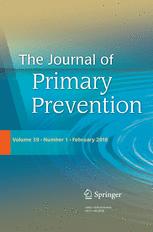 Título: Evaluation of a prevention program for pathological gambling among adolescents
Título: Evaluation of a prevention program for pathological gambling among adolescents
Autores: Anne Gaboury, Robert Ladouceur Ph.D.
Data: 1993
Abstract
Many adolescents gamble, some gamble regularly and 2% to 5% suffer from pathological gambling (Jacobs, 1989; Ladouceur & Mireault, 1988; Lesieur & Klein, 1987). This study evaluated the efficacy of a pathological gambling prevention program conducted in five high schools in the Quebec City area. Based on an alcohol prevention program (Rhodes & Jason, 1988), it included the following components: the legality of gambling, the commercial nature of the activity, automatic gambling behaviors, pathological gambling and coping skills. Nine junior and senior classes participated in the program (N=134) and nine equivalent classes served as a control group (N=155). It was predicted that experimental subjects would increase their knowledge of gambling and pathological gambling, decrease their frequency of gambling and change their attitudes toward gambling. A six month follow-up confirmed the maintenance of newly acquired information toward gambling. Results confirmed the efficacy of the program in improving knowledge and skills for controlling gambling behavior at the end of treatment. The clinical implications of prevention programs for pathological gambling are discussed.
References
-
American Psychiatric Association. (1987).Diagnostic and statistical manual of mental disorders (3rd ed.). Washington, DC: Author.Google Scholar
-
Arcuri, A. F., Lester, D., & O’Smith, F. (1985). Shaping adolescent gambling behavior.Adolescence, 20 935–938.Google Scholar
-
Bond, L. A., & Compas, B. E. (1989).Primary prevention and promotion in the schools. (Eds.). Newbury Park: Sage.Google Scholar
-
Dell, J. A., Ruzicka, M. F., & Palisi, A. T. (1981). Personality and other factors associated with the gambling addiction.The International Journal of Addictions, 16 149–156.Google Scholar
-
Gaboury, A., & Ladouceur, R. (1989). Erroneous perceptions and gambling.Journal of Social Behavior and Personality, 4 411–420.Google Scholar
-
Ide-Smith, S. G., & Lea, S. E. G. (1988). Gambling in young adolescents.Journal of Gambling Behavior, 4 110–118.Google Scholar
-
Jacobs, D. F. (1989). Illegal and undocumented: A review of teenage gambling and the plight of children of problem gamblers in America (pp. 249–292). In H. J. Shaffer, S. A. Stein, B. Gambino, & T. N. Cummings (Eds.),Compulsive gambling: theory, research and practice. Toronto: Lexington Books.Google Scholar
-
Ladouceur, R. (1991). Prevalence estimates of pathological gamblers in Québec, Canada.Canadian Journal of Psychiatry, 36 732–734.Google Scholar
-
Ladouceur, R., & Gaboury, A. (1988). Effects of limited and unlimited stakes on gambling behavior.Journal of Gambling Behavior, 4 119–126.Google Scholar
-
Ladouceur, R., & Mireault, C. (1988). Gambling behaviors among high school students in the Quebec area.The Journal of Gambling Behavior, 4 3–12.Google Scholar
-
Ladouceur, R., Tourigny, M., & Mayrand, M. (1986). Familiarity, group exposure, and risk-taking behavior in gambling.The Journal of Psychology, 20 45–49.Google Scholar
-
Lesieur, H., & Klein, SR. (1987). Pathological gambling among high school students.Addictive Behaviors, 12 129–135.Google Scholar
-
Moody, M. B E. (1989). Parents of young gamblers.Journal of Gambling Behavior.5 313–320.Google Scholar
-
Reinherz, H. Z. (1982). Primary prevention of emotional disorders in school settings. In H. C. Schulberg, & M. Killilea (Eds.).The modern practice of community mental health. San Francisco: Jossey-Bass.Google Scholar
-
Rhodes, J. E., & Jason, L. A. (1988).Preventive substance abuse among children and adolescents. New York: Pergamon.Google Scholar
-
Volberg, R. A., & Steadman, H. J. (1988). Refining prevalence estimates of pathological gambling.American Journal of Psychiatry, 145 502–505.Google Scholar
-
Wodarski, J. S. (1989).Preventive health services for adolescents. Springfield: Charles C. Thomas Publisher.Google Scholar
Fonte: Springer
















